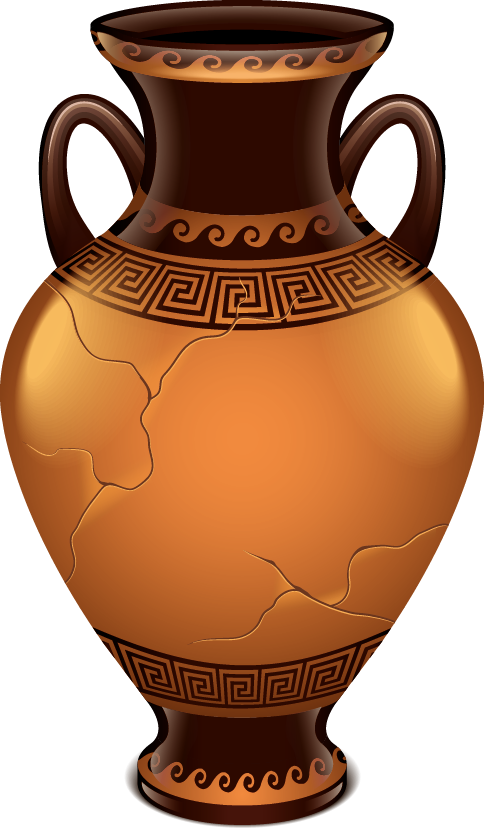If ancient Egyptians used passive evaporative cooling with porous pots of water and damp curtains, the Arabs took it a step forward with wind catchers and muscatese window designs to keep their living quarters cool

As civilisations change hands, so do art, architecture, science and technology. And logically and naturally, therefore, when the ancient Egyptian civilisation moved over to make room for the advent of the Arab way of life, there was, among other things, technology transfer.
The peoples of the Gulf region took passive evaporative cooling via porous water containers and wet curtains a step forward and used water-laden reed mats hung over doors and windows to cool the interiors. These woven reed curtains were better at retaining greater quantities of water and for a longer time. (An aside: Modern evaporative coolers are called “swamp coolers” in the United States. Could it be that these coolers got their nickname from reeds and rushes plucked from the swamps of the Nile used for making the damp curtains? This, of course, is an etymological conjectural leap, as history is a bit hazy on the subject.)
[div class=”text-box text-box-left”]
Much before window ACs came to the region, windows themselves were used as cooling devices. They were, in fact, evaporative cooling windows, called muscatese. This is how the cooling process worked: Mashrabiya or wooden grille or grate was used to cover windows with balconies, much like rattan baskets, containing a porous pottery or clay jars filled with water. When air passed through the grill, it passed over the water, becoming cooler and more humid due to evaporative cooling. The building, of course, got cooled, ventilated and humidified, thanks to these windows.
[end-div]
Getting back to passive cooling methods borrowed from Ancient Egyptians, having a rooftop opening was one such method. Called malqaf, literally meaning “wind catcher” in Arabic, and a precursor to the wind towers, it was a shaft, generally square, rising above the building with an opening facing the wind direction, to “catch” the cooler wind high above the building. It was based on the concept of trapping and channeling down prevailing winds in vents above the roofs of buildings to cool the rooms below. A malqaf served the dual purpose of passive cooling and ventilation, even as it encouraged air movement. The concept of having apertures on rooftops itself dates back to Pharaonic times (Circa 1300 BC), as seen on Egyptian wall paintings.
Adapting this architectural device, the desert dwellers right across the region further developed the malqaf technique, design and position. They also devised two openings on the roof – one facing the windward side and the other the leeward side – to allow cross ventilation and better air velocity.

A design modification to the malqaf was that it was based on the requirements of a household, with residents of larger families having bigger and more wind catchers to facilitate a greater volume of air entering the house.
Another development happened when a couple of wind catchers were led into the interior, while the other used the suction property to eject the warm air out. Historians believe that the oldest example of this type of wind catcher is a remnant of the Safavid Era.
The next-gen malqaf was multi-directional. They were more advanced and had four openings and diagonal vertical and cross blades across the wind catcher, again dating back to the Safavid era.
Another evolution in design saw two-ranch wind catchers, with the middle part rising higher than the rest.
[div class=”text-box text-box-right”]
A malqaf is called a badgir in Iran – bad in Persian means wind and gir means catcher. It was originally a vent, generally facing north, to catch the cool prevailing breeze. Badgirs were uni-directional – north facing – bi-directional or multi-directional, depending on the location and size of the structure. This, of course, needed an understanding of the principles of thermodynamics and aerodynamics. Badgirs were widely used in Iran, with the Iranian city of Yazd attaining the sobriquet šahr-e bādgīrhā (the city of wind catchers), with its variety of wind-tower structures, some of them dating back to the Timurid period (Circa 1370-1507).
[end-div]
In an inspired stroke of ingenuity, a few architects designed the malqaf in such a way that the air captured by it was cooled and humidified by having it pass over water in the basement. Porous clay and pottery jars filled with water, harking back to Ancient Egypt, or water fountains called Salsabil were strategically placed to harness evaporative cooling to cool the dwellings, while humidifying the dry desert air. They could also have filters integrated in the shafts to capture sand and dust, thus ensuring better IEQ.
A hallmark of Middle Eastern architecture, Bastakia or wind-tower houses are seen right across the Middle East, Iran, North Africa and even Pakistan and Afghanistan, with regional variations. News is that they are making a comeback in different forms, with architects rooting for them in a bid to reduce energy consumption during peak load.
[div class=”row”]
[div class=”col-md-10 col-md-offset-1 content-sidebox”]
One of the architectural elements used in the region to create cool interiors was to have a cavity constructed into the perimeter walls of residential buildings. These walls ensured uniform distribution of air, and lowered the temperature of buildings. Elements like Arabesques – artistic decorations in foliage or geometric patterns typical of Islamic Art – were added to make the walls aesthetically pleasing, even as they provided thermal comfort. Moulded blocks of chalk placed at strategic areas served the same purpose, which was an idea borrowed from the Ancient Egyptians.
[end-div]
[end-div]
References
The writer is the Associate Editor of Climate Control Middle East. She can be reached at pratibha@cpi-industry.com
Copyright © 2006-2025 - CPI Industry. All rights reserved.